Interpreting the evolution of SARS-CoV-2
Jesse Bloom
Fred Hutch Cancer Center / HHMI
These slides at https://slides.com/jbloom/sars2-evol
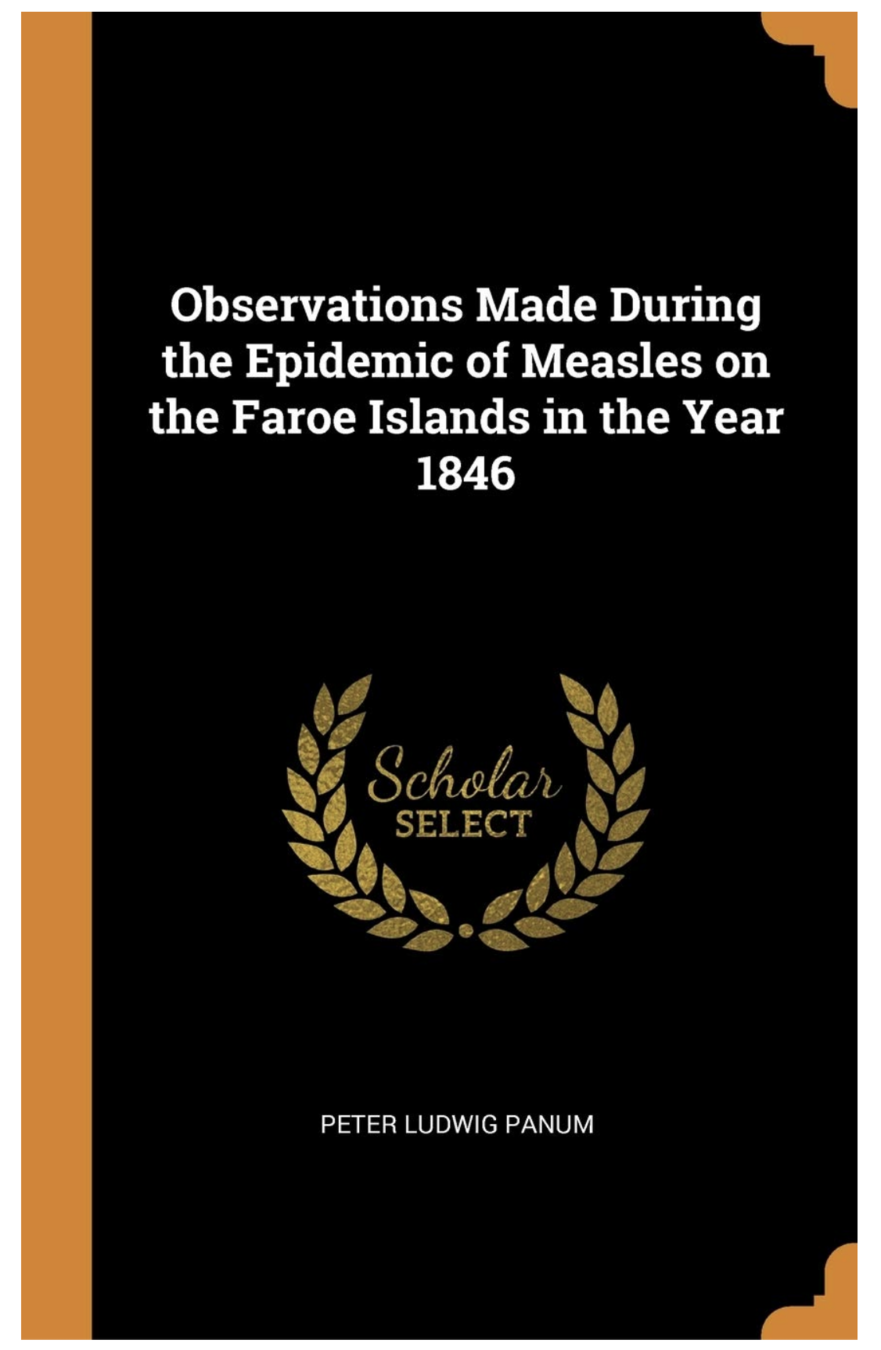
The Faroe Islands


"Measles had not prevailed on the Faroes since 1781, then it broke out early in April 1846."
"Of the 7782 inhabitants, about 6000 were taken with measles."
"Of the many aged people still living in the Faroes who had measles in 1781, not one was attacked the second time."
Panum is describing immune memory, which provides lifelong protection from measles.
But we are repeatedly infected by some other viruses. Typical person infected by influenza ~5 years. Why?
History offers natural experiment with influenza like Panum's study of measles
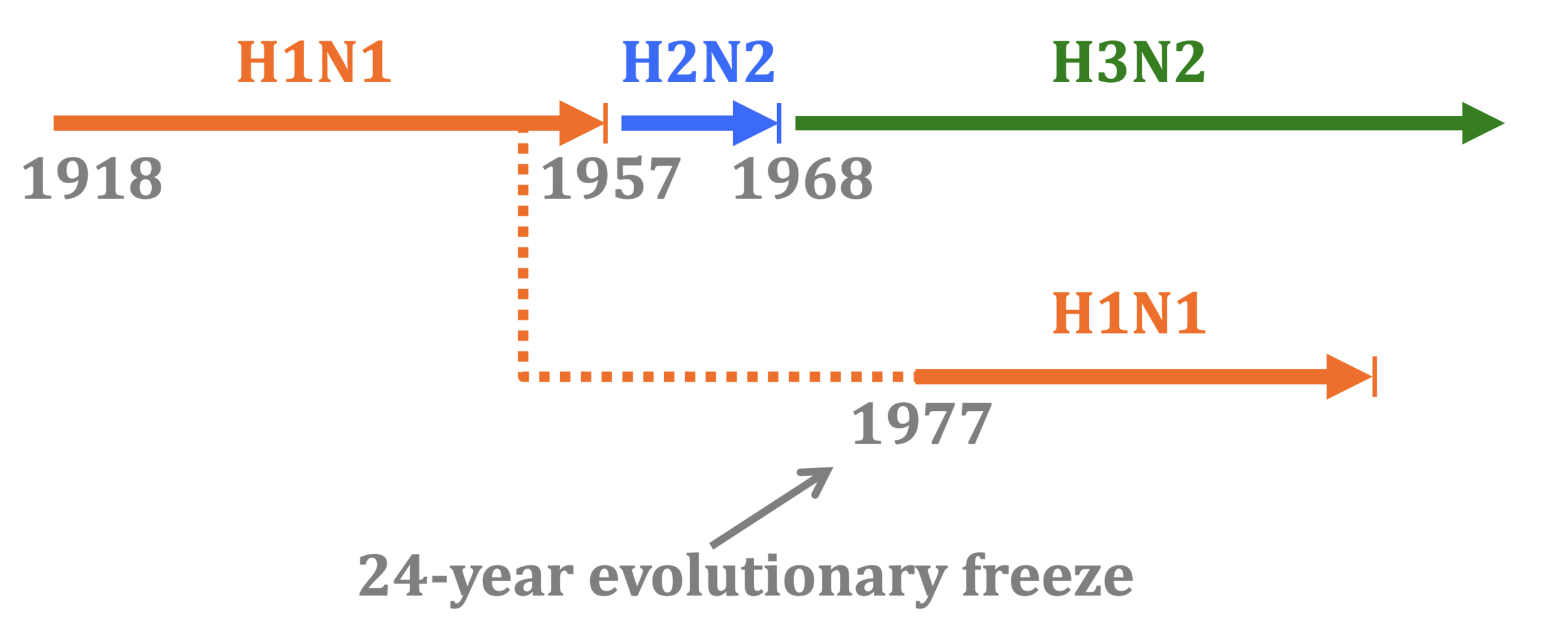
History offers natural experiment with influenza like Panum's study of measles
In 1977, old H1N1 strain from ~1954 was inadvertently re-released and caused pandemic. So re-introduction of identical virus after a few decades.



"One boy from Hong Kong had a transient febrile illness from 15 to 18 January. On Sunday 22 January, three boys were in the college infirmary… 512 boys (67%) spent between three and seven days away from class."

"Of about 130 adults who had some contact with the boys, only one, a house matron, developed similar symptoms."
Influenza infection also elicits multi-decade immunity, but only if virus is evolutionarily frozen
Some human RNA respiratory viruses evolve to escape immunity
Why some viruses evolve to escape immunity while others don't is a deep question outside scope of this talk. See here for some possible explanations.
Rate of viral antigenic evolution
Measles
Influenza

CoV-229E causes common colds and has been circulating in humans for a long time.
The typical person is infected every ~3 to 5 years.
How do other human coronaviruses evolve?
Evolution of CoV-229E spike

We experimentally generated CoV-229E spikes at ~8 year intervals so we could study them in the lab:
- 1984
- 1992
- 2001
- 2008
- 2016
Evolution of CoV-229E spike erodes neutralization by human serum antibodies
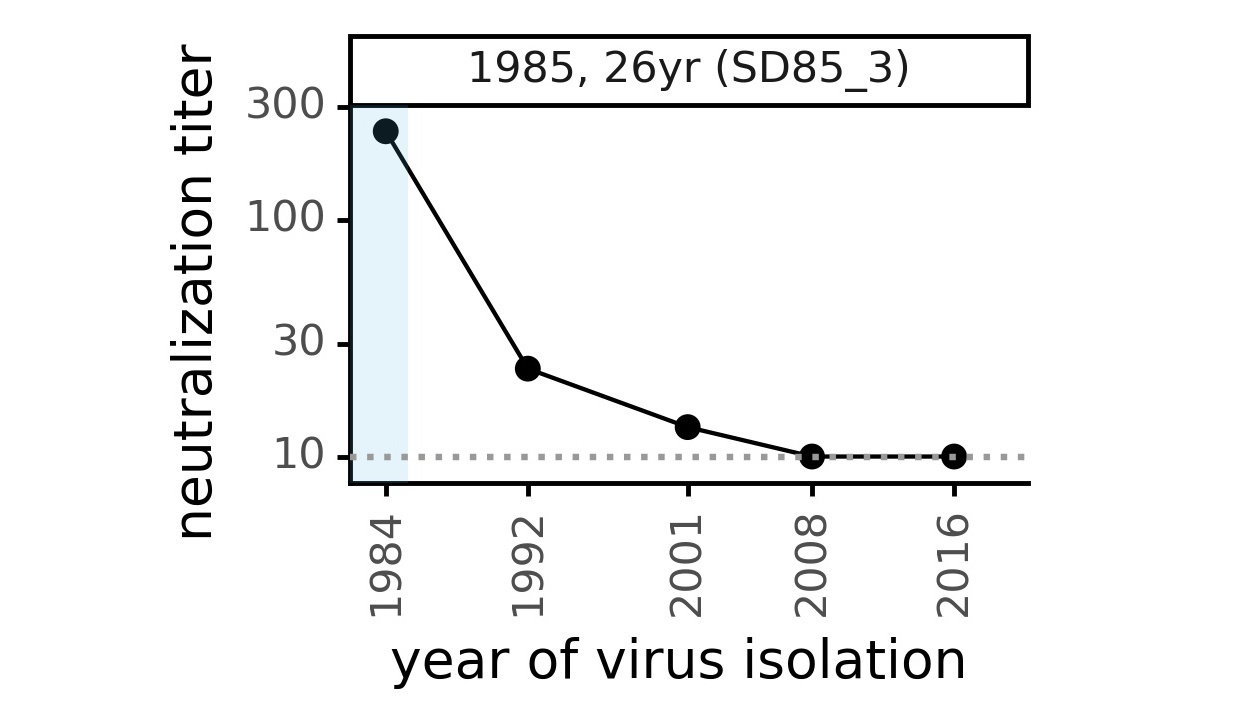
Evolution erodes CoV-229E neutralization by different sera at different rates

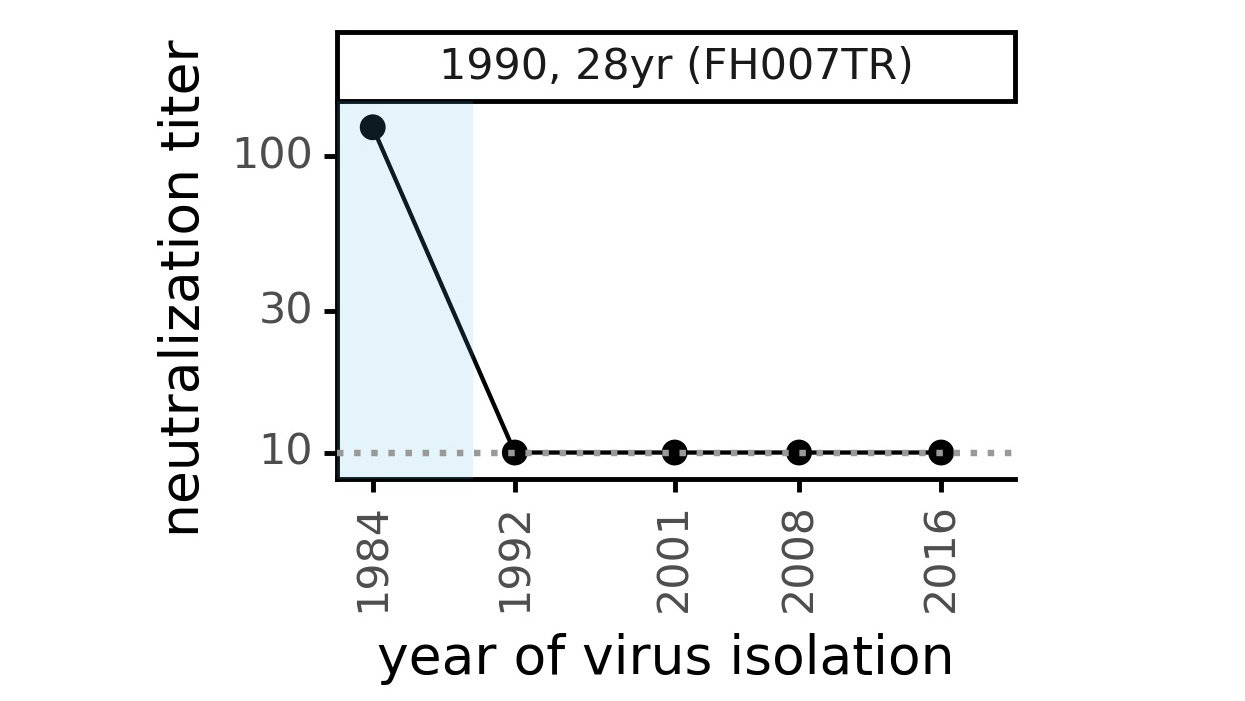
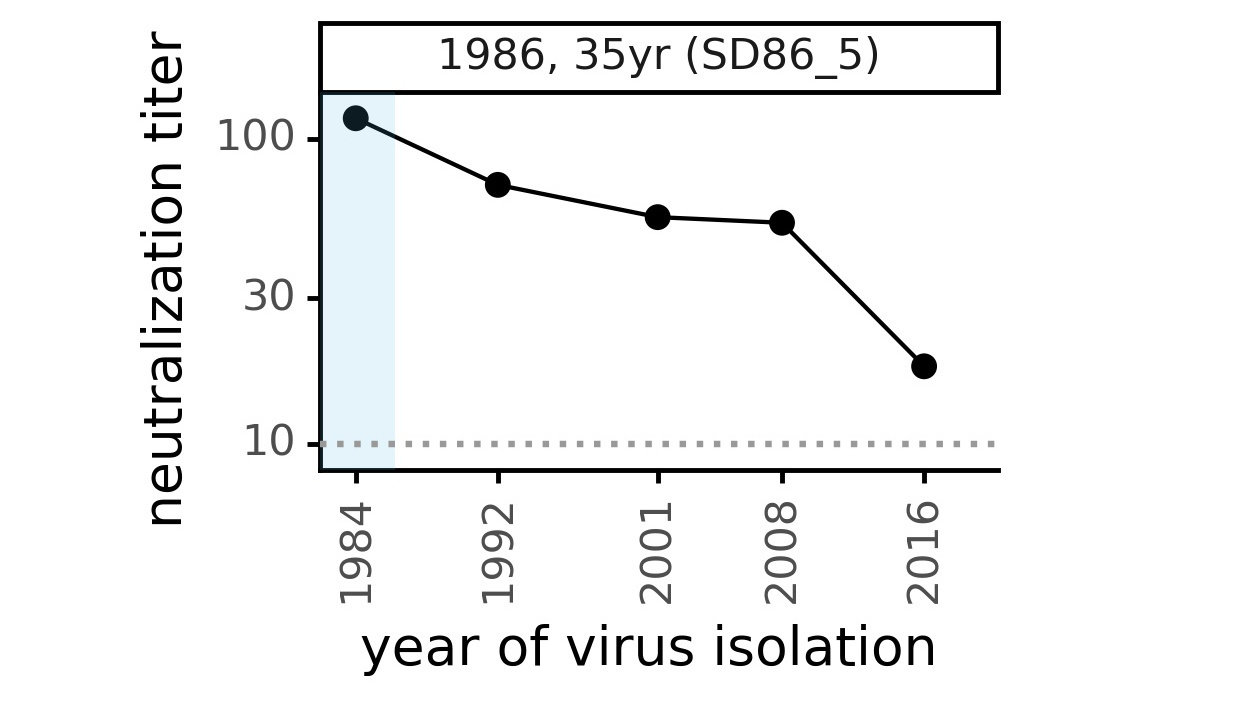
Ideally vaccines would elicit evolution-resistant neutralizing antibodies (like those naturally made by person at right) rather than evolution-sensitive antibodies (like those naturally made by person at left)
Strongest evolutionary selection is in RBD
Sites of evolutionary change in the spike of CoV-229E over the last four decades
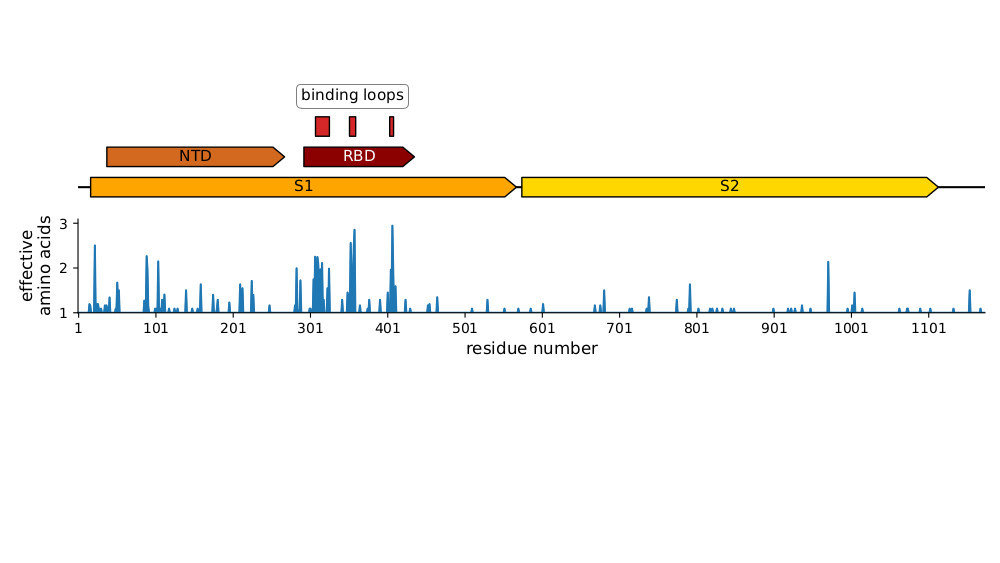
Strongest evolutionary selection is in RBD
Sites of evolutionary change in the spike of CoV-229E over the last four decades

Sites of mutations in SARS-CoV-2 Omicron BQ.1.1 spike relative to Wuhan-Hu-1
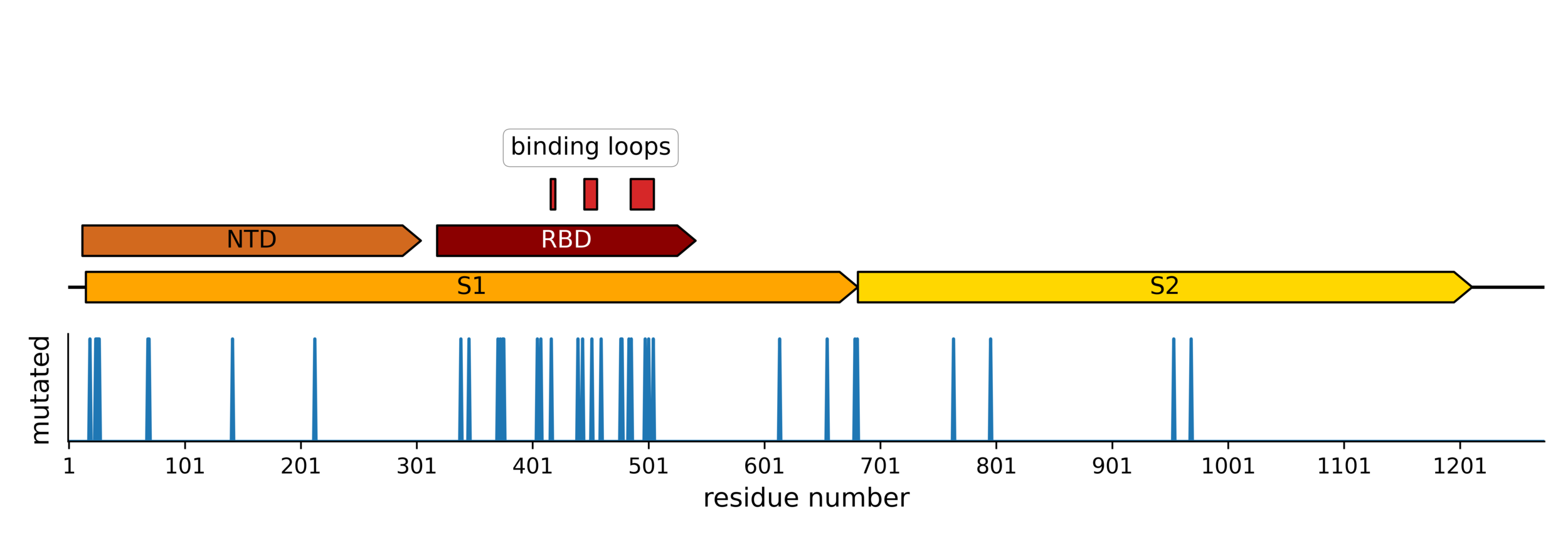
RBD does not run out of evolutionary space
25 of 31 residues in CoV-229E RBD that contact receptor varied during virus's evolution in humans over last ~50 years (Li et al, 2019)
Phylogenetic tree shape & vaccine strategy

CoV-229E has ladder-like tree:
- new variants displace old ones
- new variants descend from recent successful ones
Human influenza A evolves this way too. It's theoretically possible to pick single well-matched vaccine strain.
Phylogenetic tree shape & vaccine strategy
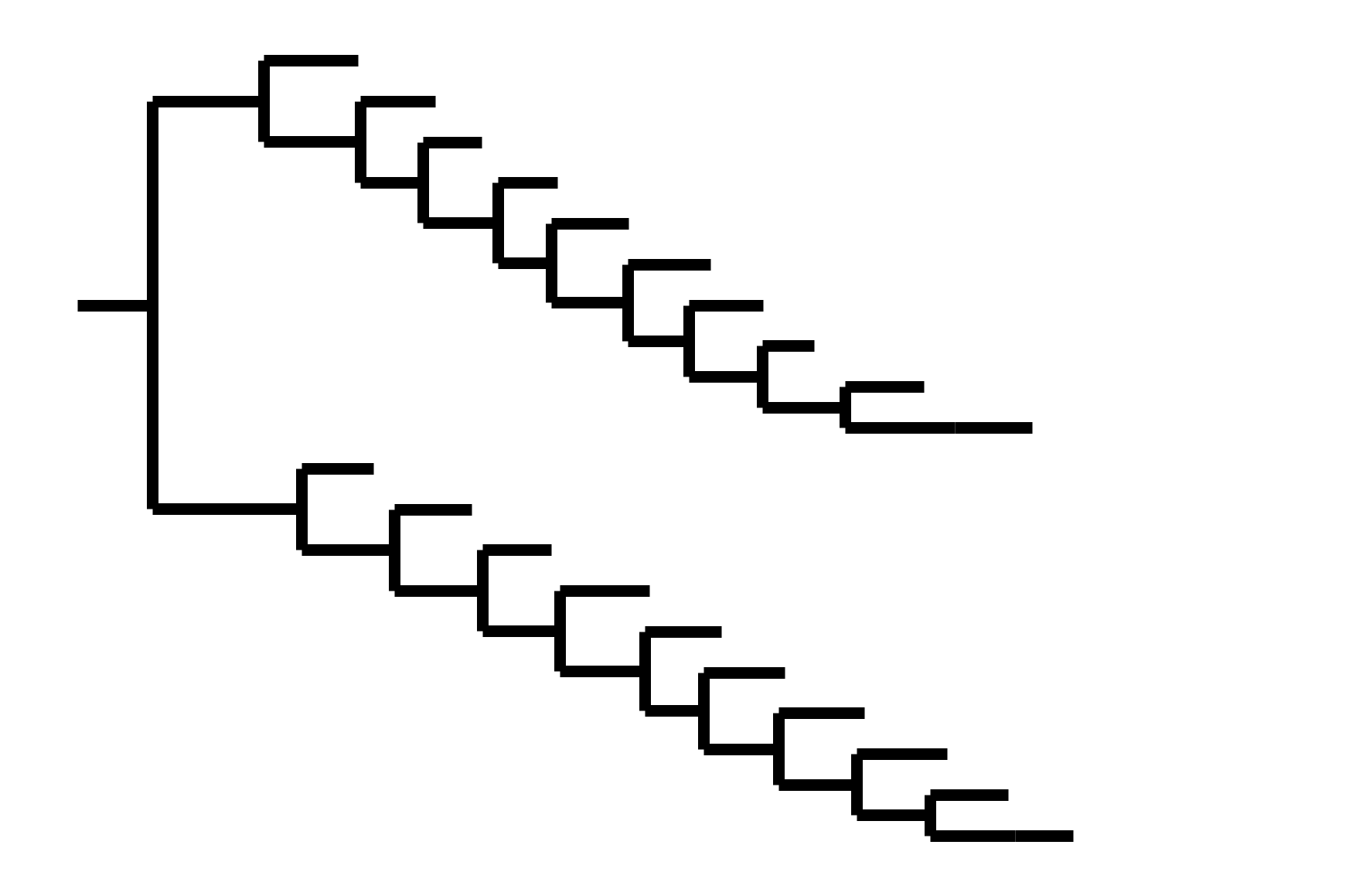

CoV-229E has ladder-like tree:
- new variants displace old ones
- new variants descend from recent successful ones
Human influenza A evolves this way too. It's theoretically possible to pick single well-matched vaccine strain.
CoV-OC43 split into two ladder-like lineages. Influenza B evolves this way too. It's theoretically possible to pick well-matched bivalent vaccine.
Phylogenetic tree shape & vaccine strategy

CoV-229E has ladder-like tree:
- new variants displace old ones
- new variants descend from recent successful ones
Human influenza A evolves this way too. It's theoretically possible to pick single well-matched vaccine strain.

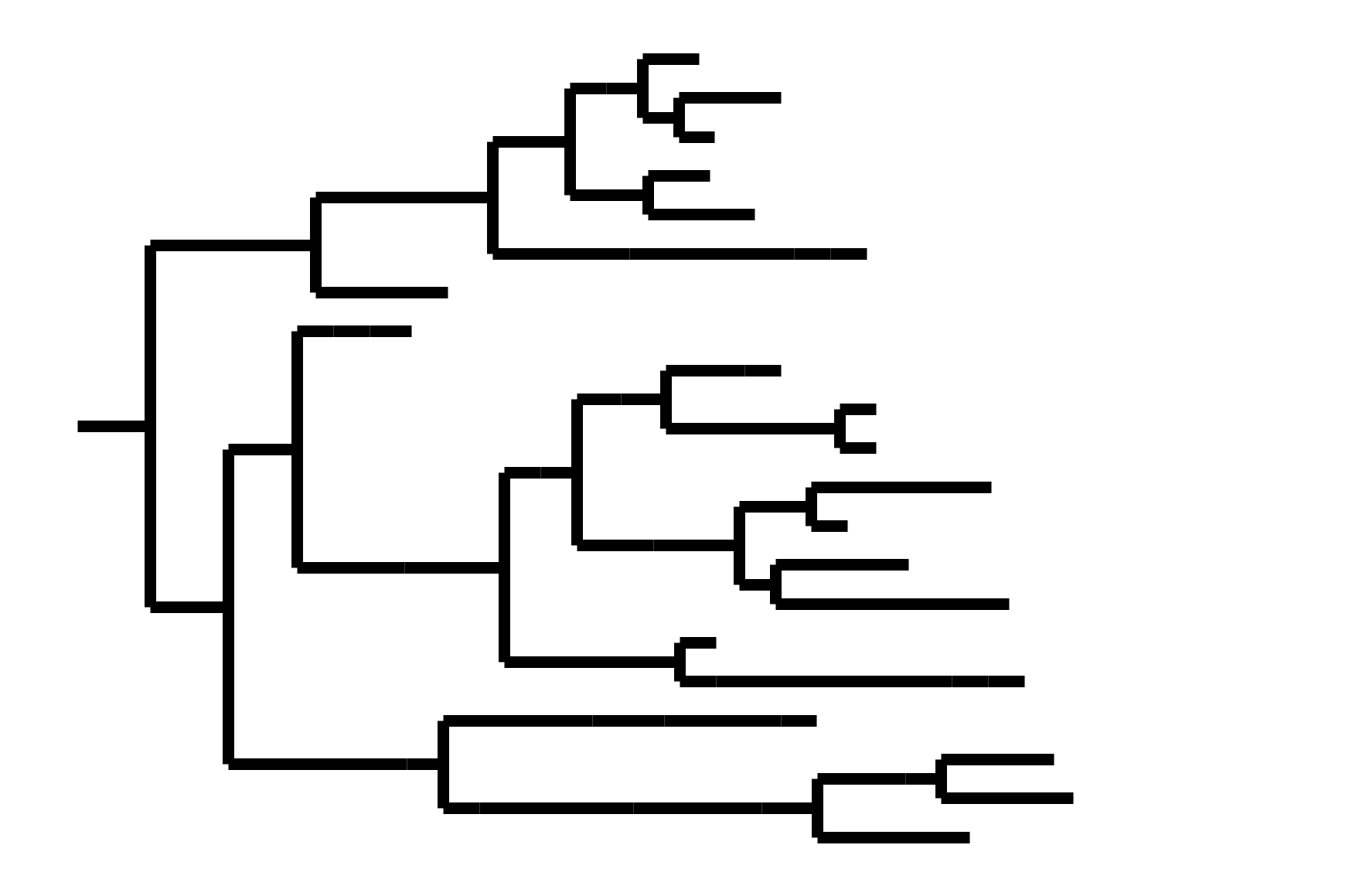
CoV-OC43 split into two ladder-like lineages. Influenza B evolves this way too. It's theoretically possible to pick well-matched bivalent vaccine.
In non-ladder-like tree, there can be high standing genetic variation. Makes picking vaccine strains difficult.
If evolution is being driven by selection for neutralizing antibody escape, what might be next?
All enveloped viruses have one or more entry proteins that bind receptor and fuse the viral and cell membranes
- SARS-CoV-2 spike
- influenza hemagglutinin
- HIV envelope protein
- Lassa virus glycoprotein
- Nipah virus G and F proteins
- RSV G and F proteins
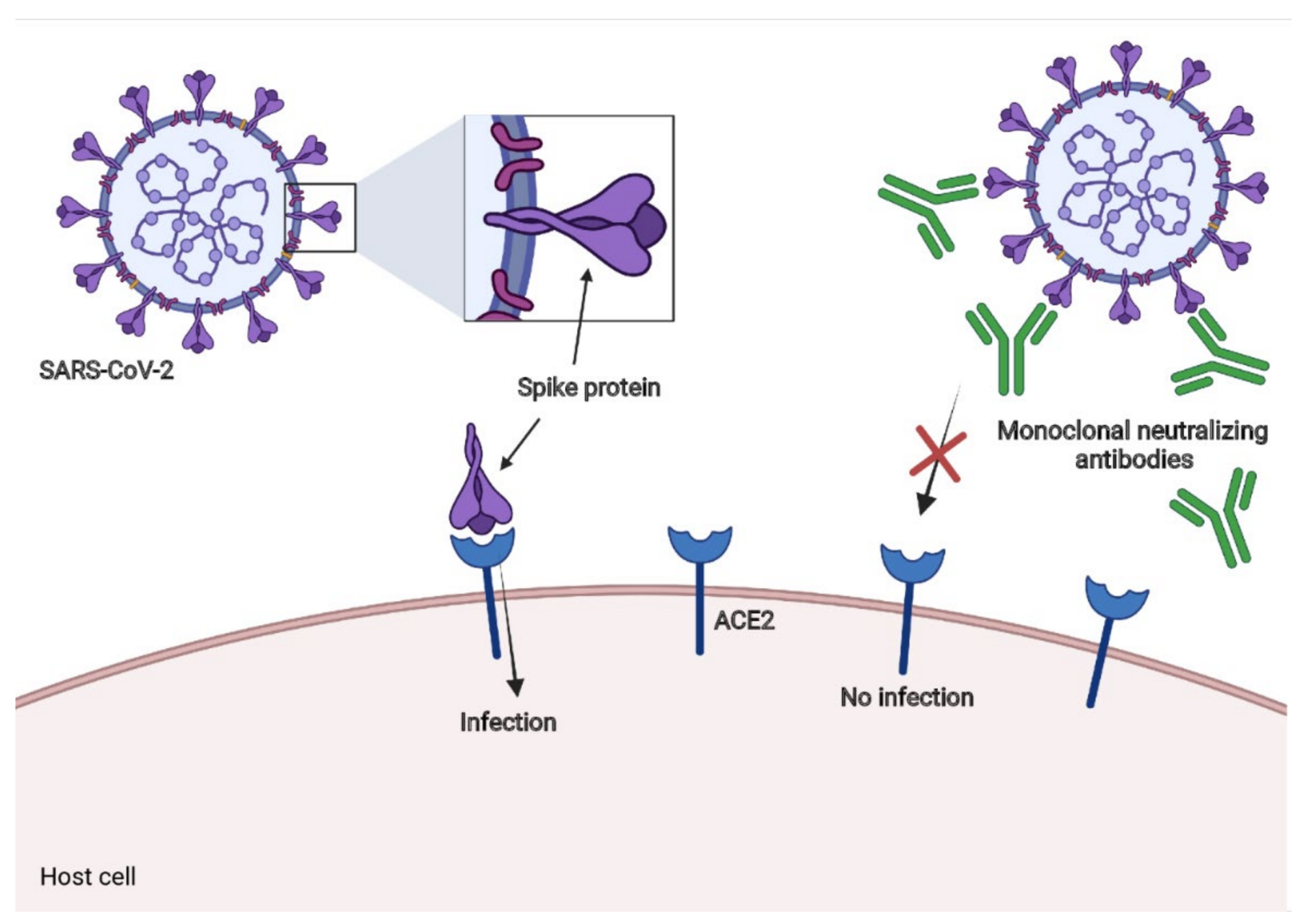
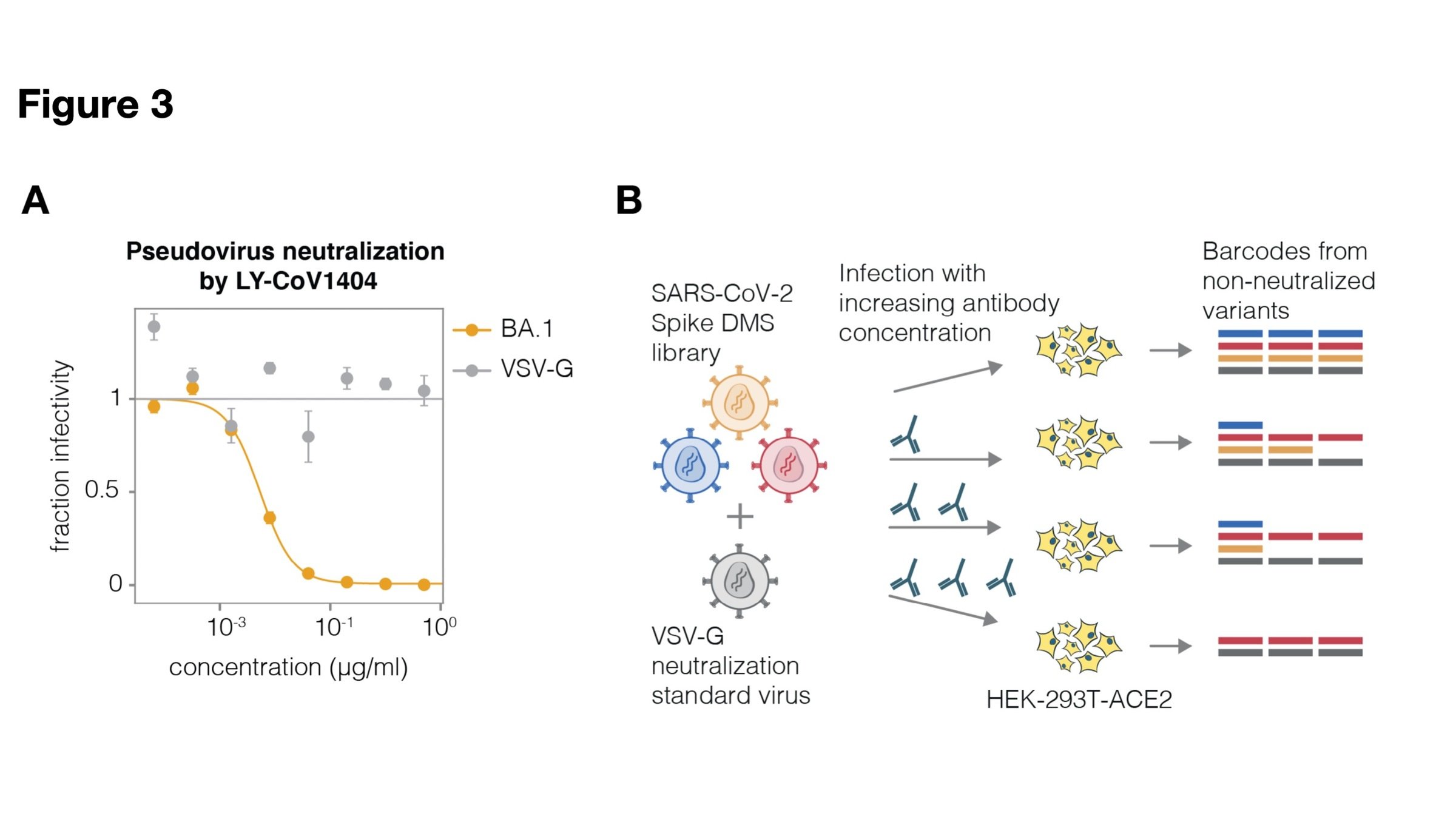
Deep mutational scanning of viral entry proteins (cell entry, antibody escape, receptor binding)
How to measure effects of mutations to viral entry proteins?
- General: can work for many viral entry proteins
- Comprehensive: measure mutations throughout the protein
- High-throughput: can be applied new variants and antibodies
- Safe: we want to avoid concerns with making novel replication-competent viruses
- Directly measures escape from neutralization, rather than just binding
Lentiviral pseudotyping
- Many enveloped viruses have entry proteins amenable to lentiviral pseudotyping.
- Safe and well-established way to study cell entry function of these proteins
- However, traditional pseudotyping does not create genotype-phenotype link.
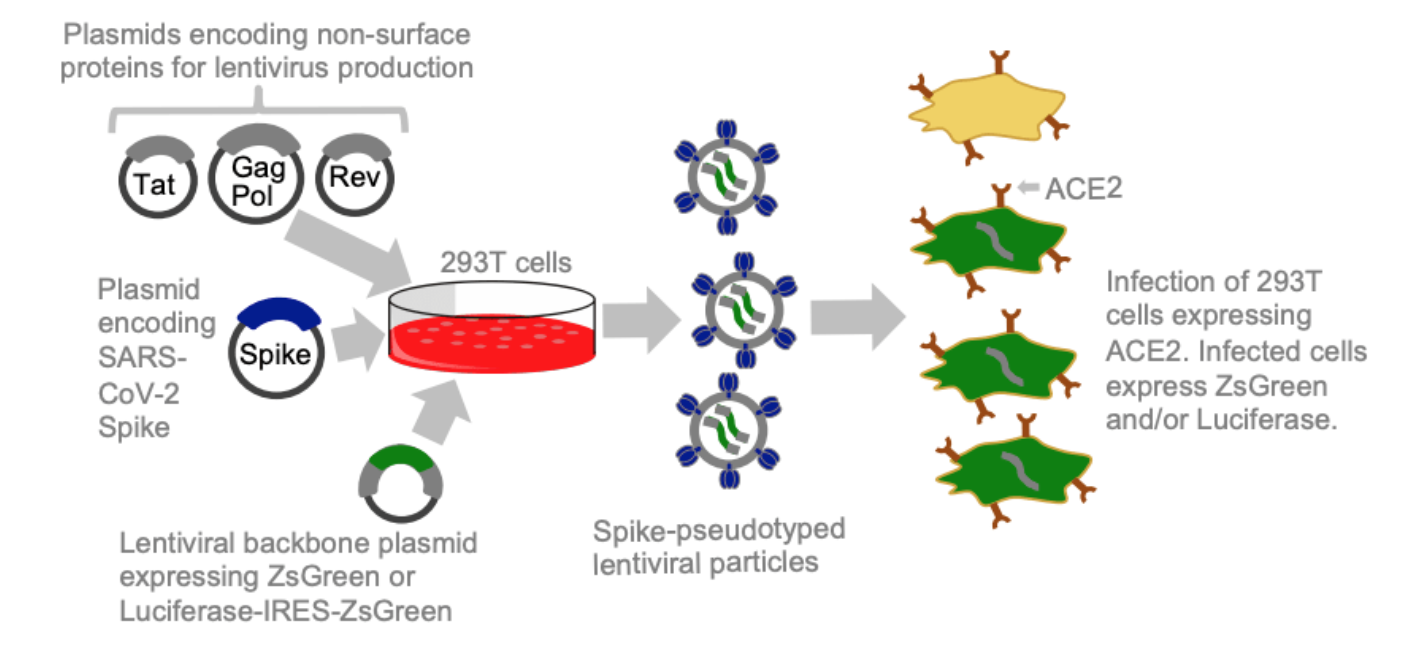
Two-step method to create genotype-phenotype linked pseudotype libraries
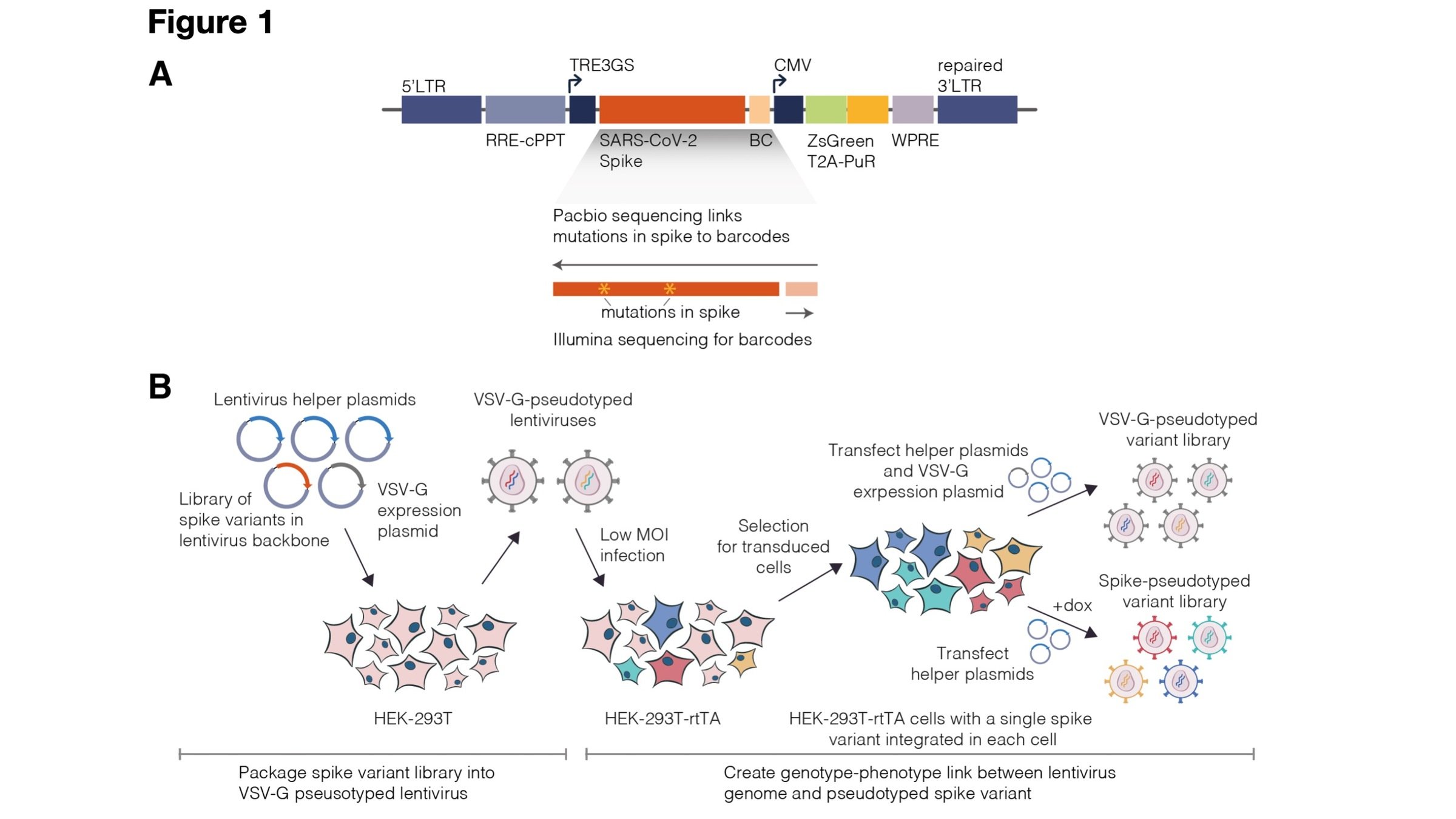
Two-step method to create genotype-phenotype linked spike-pseudotypes

Sequencing measures relative amounts, so include neutralization standard

Example: RBD antibody LY-CoV1404
Validates very well
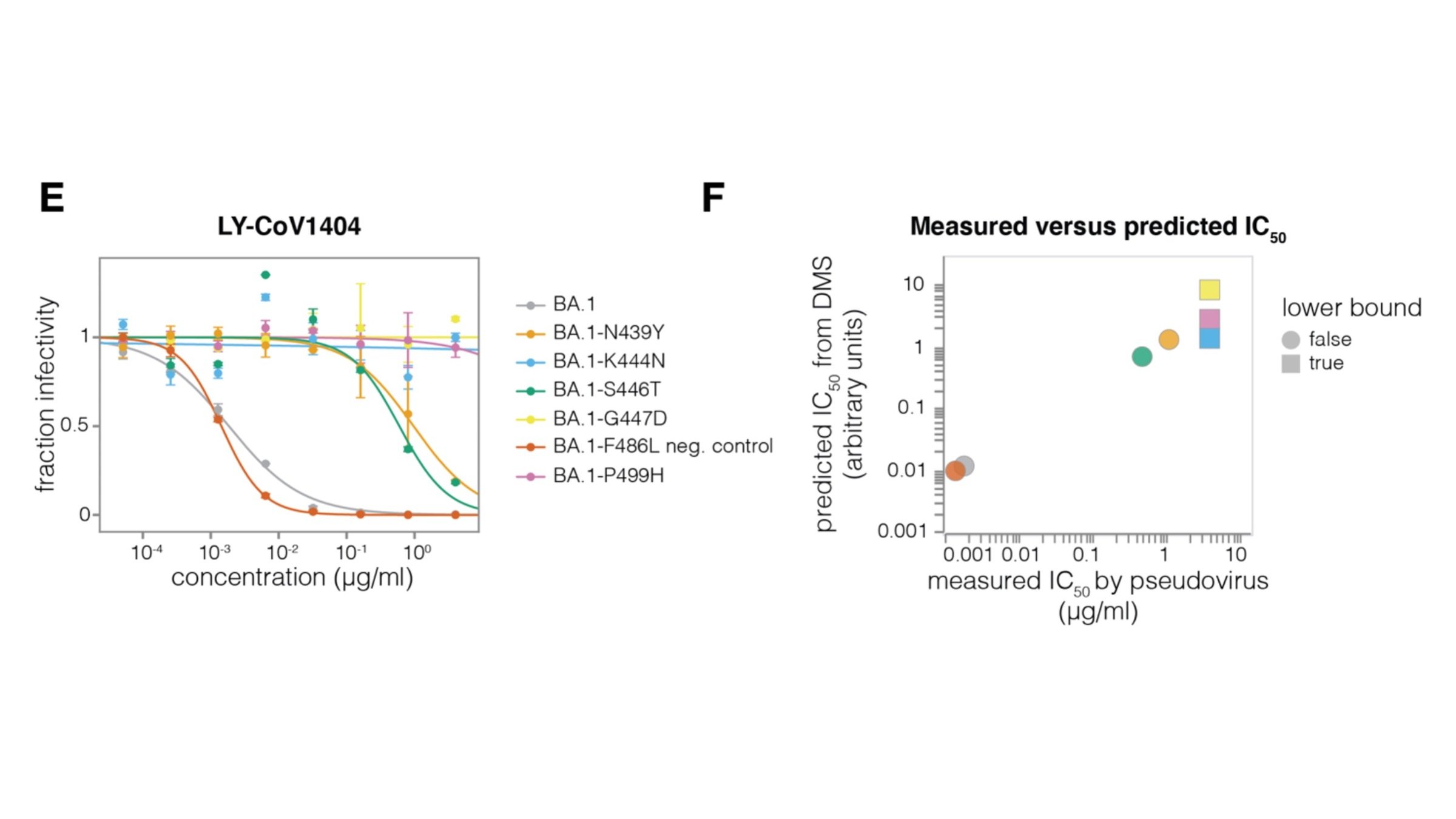
We mapped how all tolerated mutations to XBB.1.5 spike affect three key phenotypes
Cell entry: how well pseudovirus enters 293T-ACE2 cells
Sera escape: how pseudovirus is neutralized by human polyclonal serum
ACE2 binding: how pseudovirus is neutralized by soluble ACE2
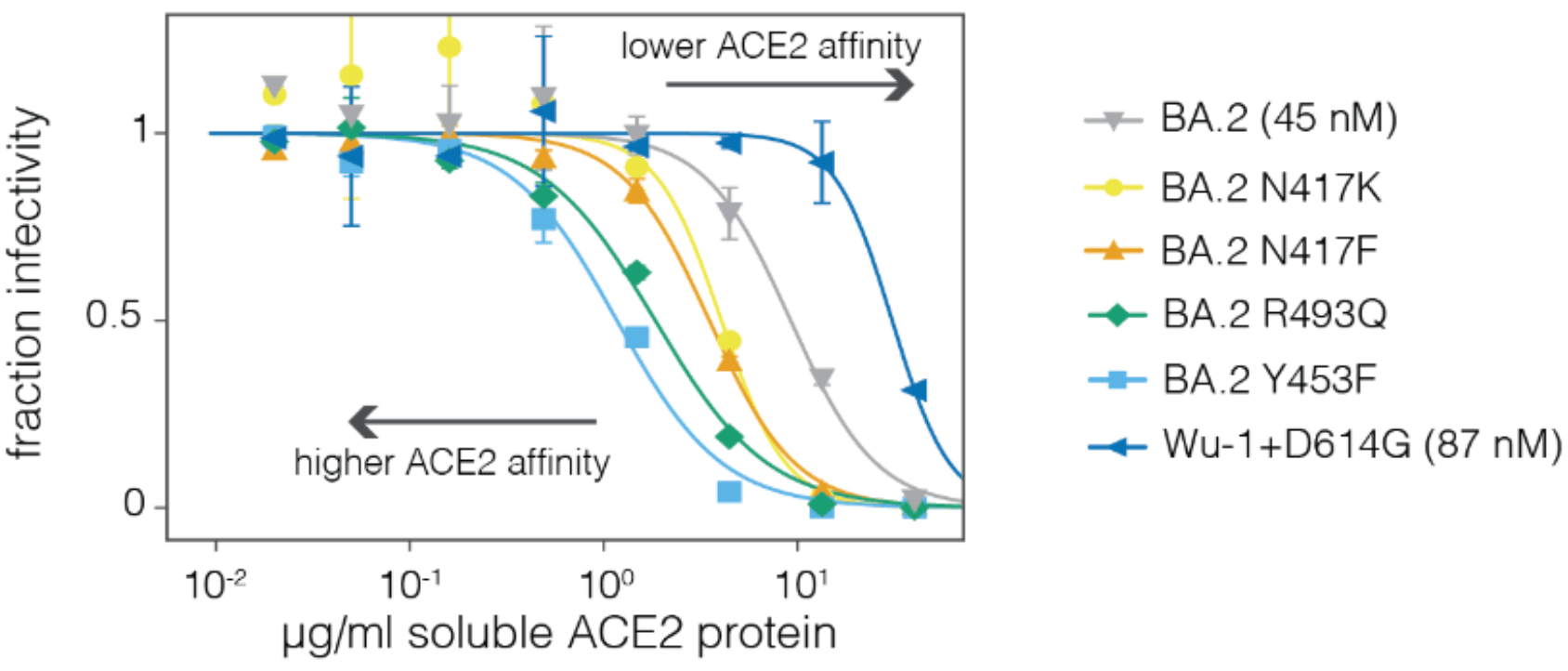
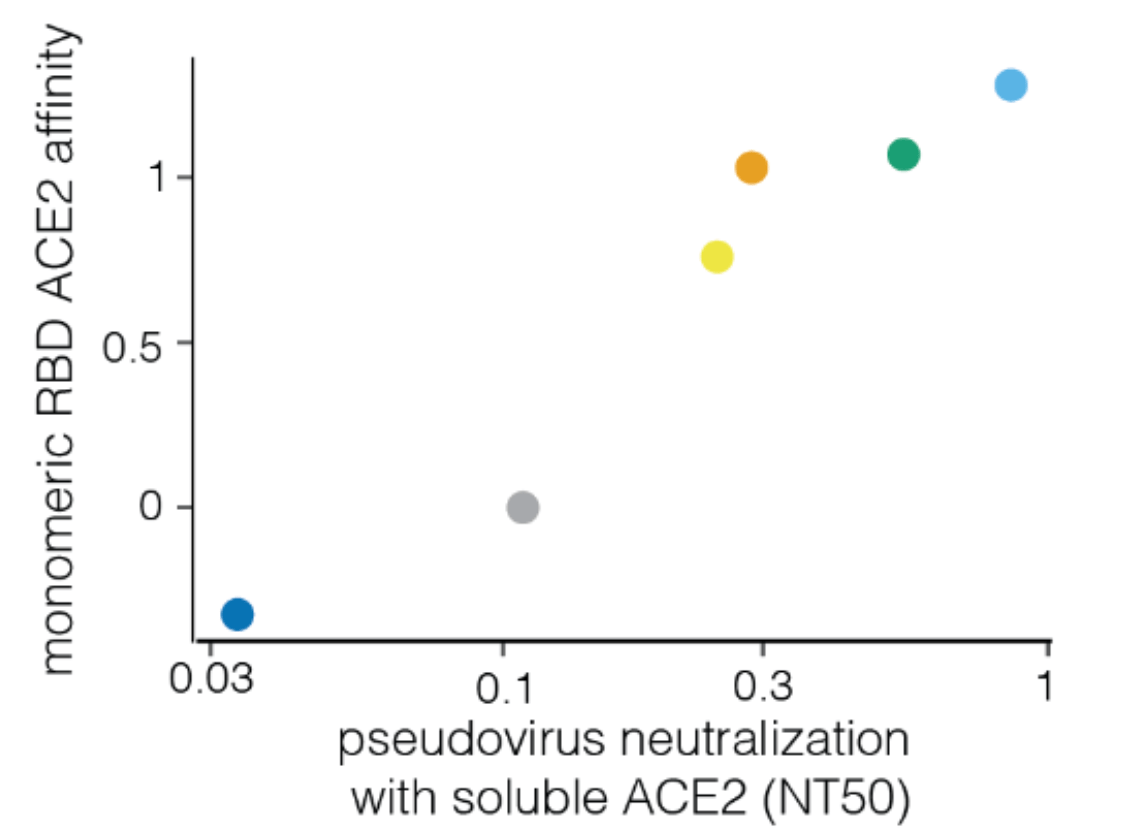
Neutralization by soluble ACE2 is proportional to ACE2 binding affinity
How well do these spike phenotypes predict human SARS-CoV-2 clade growth?
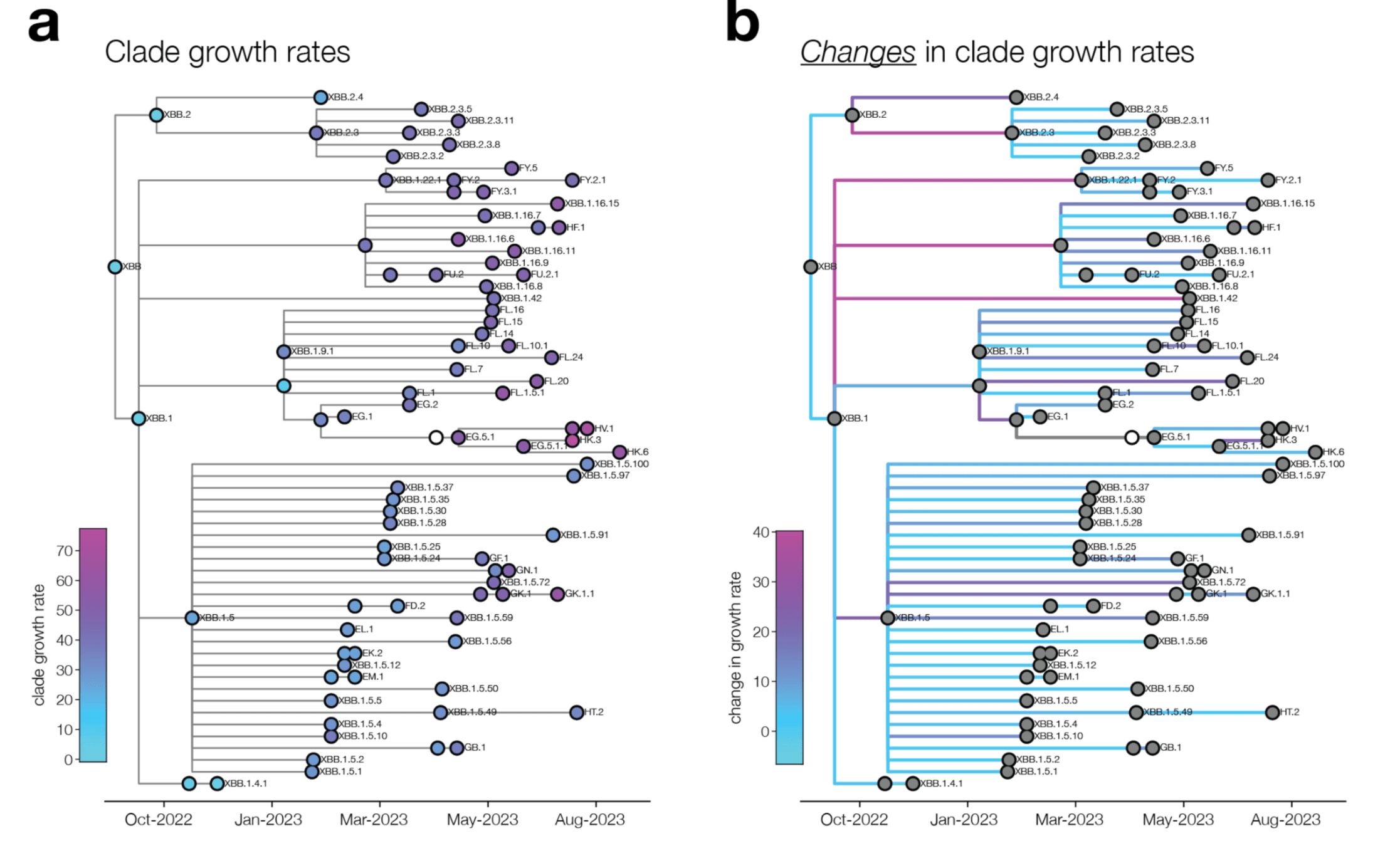
change in clade growth
clade growth
Measured spike phenotypes correlate with changes in SARS-CoV-2 clade growth
Multiple linear regression combining spike phenotypes predicts clade growth well
Extending this approach to additional viruses
Lassa virus glycoprotein complex (GPC)
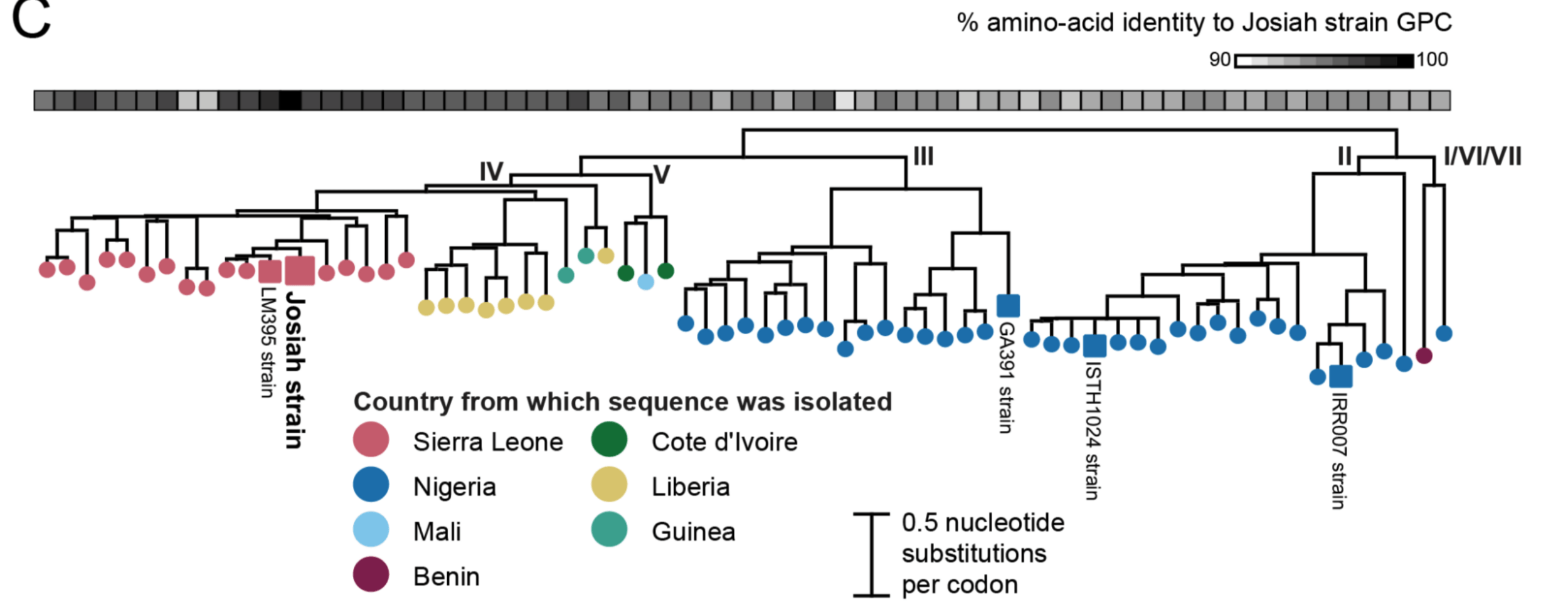
Lassa virus causes thousands of human deaths each year, primarily from spillovers from Mastomys rodents. But there has been limited human-to-human spread.
There are ongoing efforts to develop antibodies and vaccines.
Effects of mutations on GPC-mediated cell entry
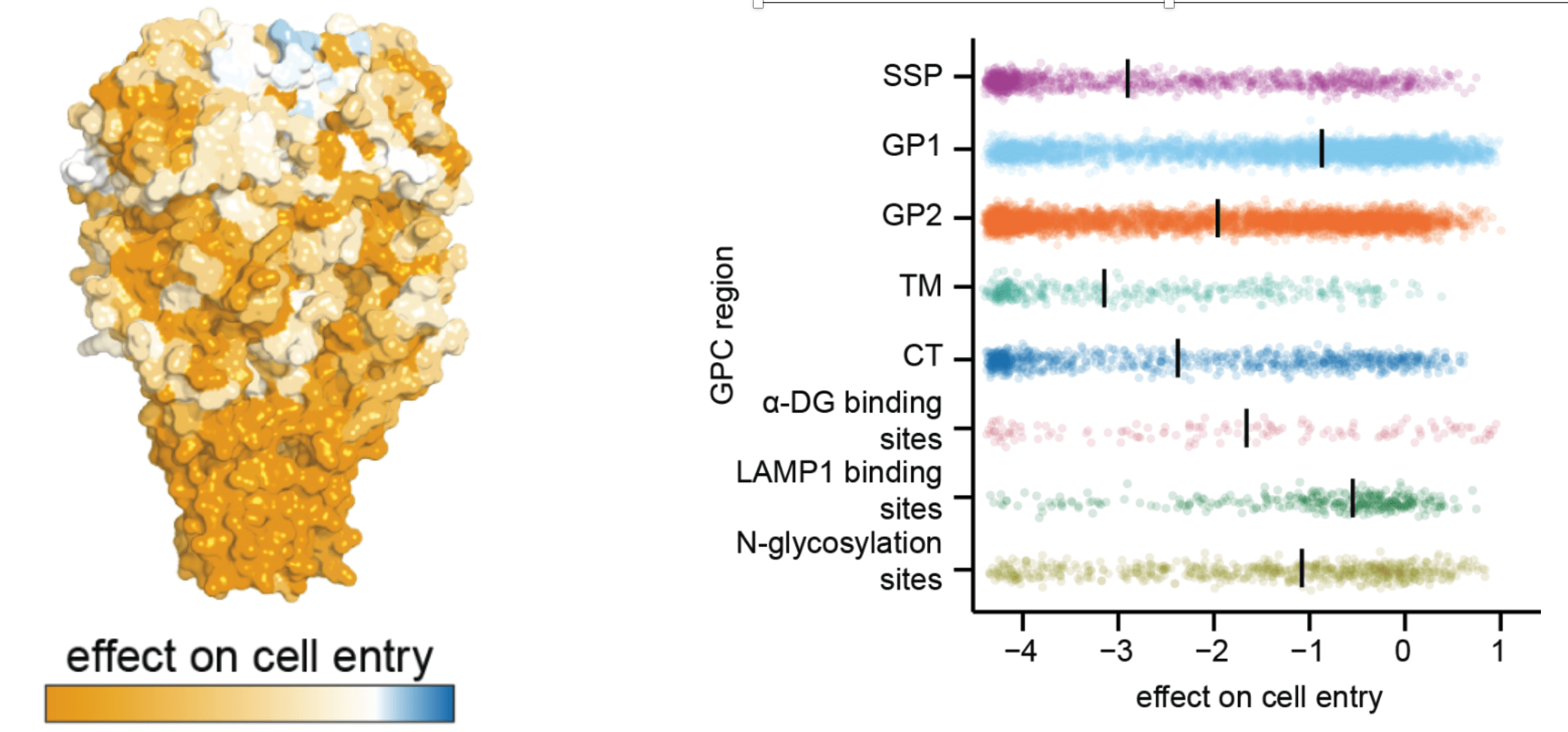
Functional constraint on Lassa GPC

Each antibody we analyzed is escaped by some well-tolerated mutations
Escape mutations for all antibodies are already observed in known natural GPC sequences

The natural GPC variants with these mutations indeed have increased escape
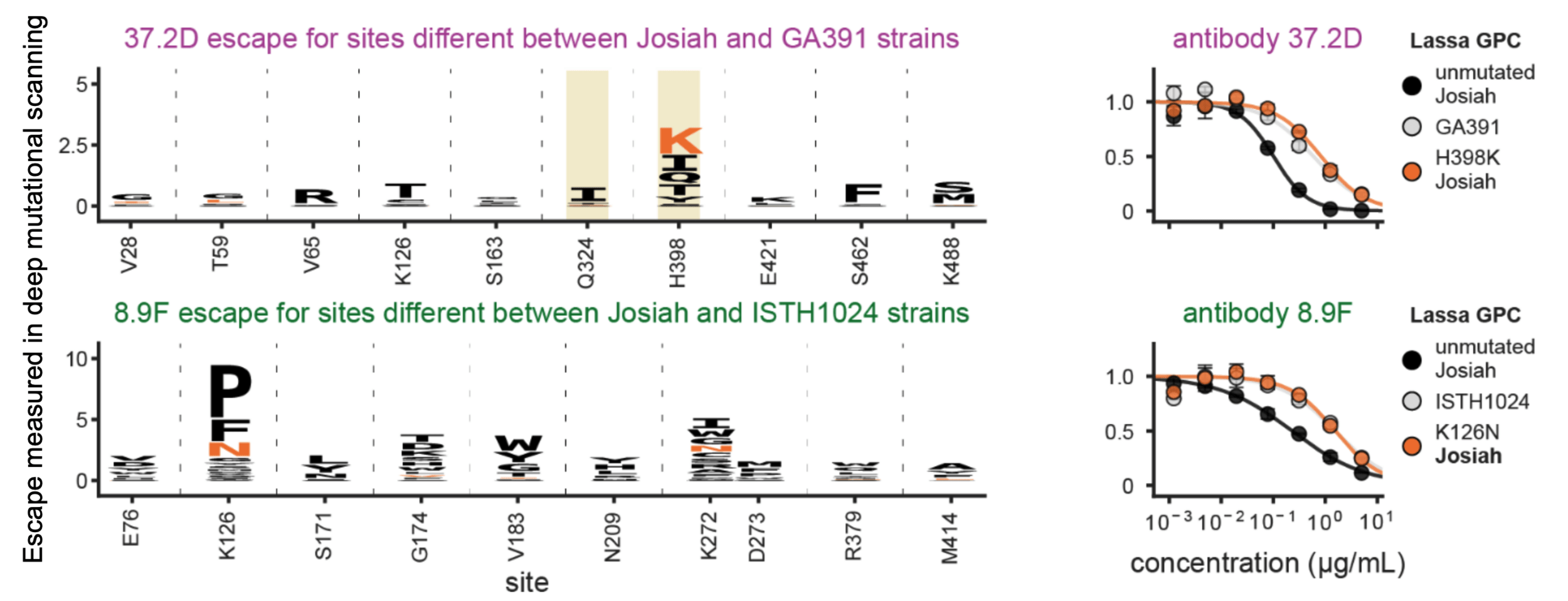
We can predict the escape of natural strains from adding up effects of mutations in deep mutational scanning

Conclusions
For both human endemic (SARS-CoV-2) and potential emerging (Lassa) viruses, we can safely measure how mutations to the entry proteins affect key molecular phenotypes.
For SARS-CoV-2, these measurements can help predict success of variants in humans.
For both viruses, we can predict extent of antibody escape of different variants.
These phenotypic maps can help inform the design of antibody and vaccine countermeasures that are more robust to viral escape.
Bloom lab
Bernadeta Dadonaite
Kate Crawford
Caelan Radford
Caleb Carr
Rachel Eguia
rest of lab
University of Washington
Helen Chu and HAARVI cohort
Neil King
David Veesler




Thanks

